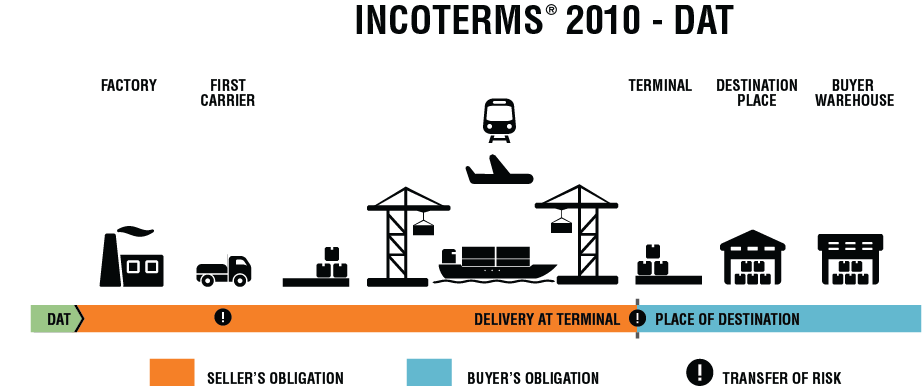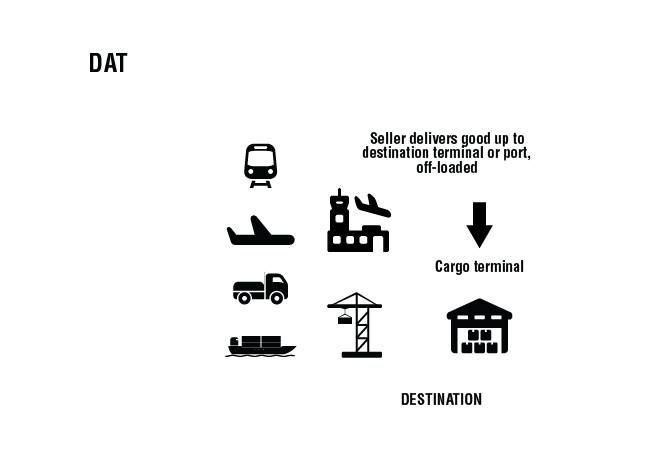| THE SELLER’S OBLIGATIONS |
THE BUYER’S OBLIGATIONS |
| 1. Provision of goods The seller must deliver the goods, provide commercial invoice or an equivalent electronic document, provide evidence of conformity or proof of delivery |
1. Payment The buyer must pay the price of goods as agreed in the contract of sale |
| 2. Licences, authorisations and formalities The seller must provide export licenses or local authorizations for exporting goods |
2. Licences, authorisations and formalities The buyer must get any export license and import permit for the export of goods |
| 3. Contracts of carriage and insurance Contract of carriage at sellers expense in the usual route to the agreed point of delivery |
3. Contracts of carriage and insurance Contract of carriage without obligation Contract of insurance without obligation |
| 4. Delivery The seller must deliver the goods unloaded at the agreed point and time |
4. Taking delivery Take delivery of the goods at the agreed port of destination |
| 5. Transfer of risks The seller is responsible until goods are available as agreed |
5. Transfer of risks The buyer must bear all risks of loss of or damage from the time the goods have been made available in the agreed place of delivery |
| 6. Costs The seller must pay all cost of main carriage, loading at place of origin, export clearance at origin, unloading at place of destination |
6. Costs The buyer pays for all cost relating since goods are available, import customs duties and taxes |
| 7. Notice to the buyer The seller must notify the buyer that goods have been delivered |
7. Notice to the seller The buyer must provide time of shipment and port of destination |
| 8. Proof of delivery, transport document or equivalent electronic message At his own expense, a document that allows the buyer to pick up the goods |
8. Proof of delivery, transport document or equivalent electronic message Accept sellers delivery document |
| 9. Checking The seller must bear the cost of checking, quality control, measuring, weighing, counting, packing of goods and marking. If special package is required, the buyer must inform and the seller and agreed on extra expenses |
9. Inspection Unless it’s a mandatory at origin, pay any pre-shipment inspection |
| 10. Other Assist obtaining additional information required by the seller |
10. Other Assist obtaining additional information required by the seller |
 Source: internationalcommercialterms.guru
Source: internationalcommercialterms.guru
